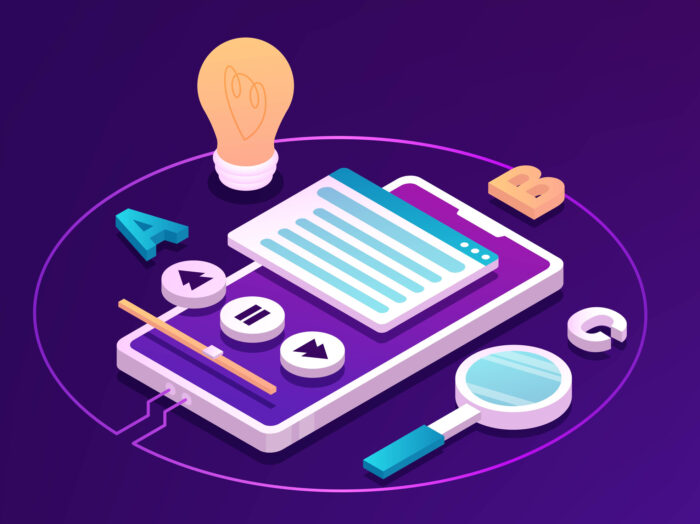According to Gallup, just 12% of workers strongly agree that their company does a great job of onboarding new hires.
This isn’t surprising. Here’s another statistic: a Harvard Business Review study found that almost a quarter of companies don’t have a formal onboarding process at all.
The absence of a training manual or documentation often leads to employees asking their managers the same questions over and over again. An employee training manual can help you plug this gap and streamline and standardise your onboarding process.
By providing a comprehensive training manual, employees have a reliable source for information when they need it. This helps you unlock your employees’ potential by onboarding them effectively.
Need to create a training manual for a software package? Omniplex Guide is the easiest way to do it – click here to try Guide now.
What is a training manual?
A training manual is an instruction book that your employees can use to learn about the important tasks and functions in your company. These are often given to employees when they join an organisation as part of the induction or onboarding process.
A good training manual typically includes:
- An introduction to the organisation: This section typically includes an outline of the ethos of your business and the company structure. Many training managers underestimate the importance of aligning their employees’ vision with that of the company. To address the topics in this section of your training manual, ask yourself: What is the overall aim of the organisation? What is a new hire’s place within it? What is the the organisation’s vision for the future?
- An in-depth job description: Employees must know their responsibilities and what’s expected of them. By providing this information in a section of the training manual, you provide a great way for new hires to understand their position within the team.
- Safety and compliance information: Essential health and safety information such as fire safety, data protection information and diversity statements should be provided to new staff from their first day with a new company.
A step-by-step guide on business processes: Here, you provide a detailed low-down on how the business works and how you expect your employees to perform their duties.
Why are Training Manuals Important?
A training manual ensures that anyone carrying out a certain task or using a new product is doing so in a way that best fits the processes and ethos of your business. It can also help define a standard and consistent approach to your processes, especially between employees with similar roles.
A good training manual promotes efficiency and provides employees with straightforward instructions and a definitive guide, which should answer most, if not all, of their work-related questions.
It’s particularly useful for new hires, but they’re also a great resource for experienced members of staff. All your employees can use the training manual to brush up on techniques and remind them of the basics of your business.
Employers find training manuals useful when it comes time to roll out new processes, software and systems. By creating an in-depth process guide, you can help employees get to grips with new workflows fast.

What are the Different Types of Training Manuals?
- Interactive training manuals: Interactive e-learning platforms like Omniplex Guide provide the most engaging way to train your employees. Research shows that interactive e-learning guides increase employee information retention rates by 25-60%.
- Printed, written guides: The most straightforward approach is to create a training manual PDF document that can be sent or printed for new hires. Only issue:you’ll need to print out new versions to include the latest changes.
- Training video tutorials: Video platforms like Panpoto and Camtasia are popular for creating and sharing video training manuals and guides. Video tutorials aren’t interactive by nature, and can be too long and cumbersome for new employees to go through.
How to Create a Training Manual for Employees
Below we go over the main steps in creating a user manual your employees – new and old – will want to use as a reference:
Step 1 – Define your objectives
The first step taken towards creating a training manual that works is to define your objectives.
What should the user have learned to do by following this guide?
This means deciding exactly what you want them to achieve, no more and no less.
Putting too much into one training manual can overload the user, making the task seem more daunting than it is and defeating the object of creating an efficient, accessible set of instructions. Not putting enough information in can leave the trainee with questions that are not answered by the manual and forcing them to once again go elsewhere for support.
- Some common objectives when creating a training manual include:
- Acclimatising new employees with workplace processes
- Providing health and safety information to reduce accidents at work
- Giving current employees new skills for when processes are updated and the ability to adapt to new ways of working
- Fulfilling extra training requirements identified during performance reviews
- Increasing employee productivity with more efficient or standardised ways of working
- Providing the extra training needed for staff to advance through promotions
- Outlining the manual’s objectives will allow you to create a coherent flow of instructions for the user.
Step 2 – Identify your audience
The next step in creating your manual is to identify and understand your audience and their particular needs.
This will enable you to present the information in the best way possible for them. Whether you are a current employee of the organisation yourself or an external trainer, your manual must take into account the organisation’s culture and demographics in order to achieve the stated objectives.
Think about the trainees as a group and as individuals, their position in the organisation, their prior knowledge base and the industry in which you are training. This will increase the effectiveness of your manual, by embedding new, relevant knowledge, reducing low uptake and making the whole project much more worthwhile and more likely to be a success.
Step 3 – Select your training tools
Now you have established what you want the learner to know, and who those learners are, you can choose the right tools for the job by selecting how you will present your training materials.
We’ve come a long way from traditional, hard-copy training manuals, which have often proven unwieldy and unappealing to new users. If you’re issuing training manuals in Microsoft Word or PDF, expect a frosty reception, poorer learning outcomes, and less engagement.
New ways of learning have arrived, and they include video creation from Vyond, interactive elearning such as those from Articulate, and the increasingly popular fully interactive, step-by-step product guides produced by Omniplex Guide.
These interactive training manuals take the user through each part of the learning process with self-paced guided tours of new products. This method makes the user an active part of the learning process and shows them an example of real-time results, which helps to ensure each new step is properly understood before moving on to the next, creating a deeper overall understanding of the task at hand.
Omniplex Guide’s cloud-based guided tours of software require no installation or code and work well with virtually every website out there. During the tour, you can choose which sections to highlight and offer instruction on, while providing the user with the feeling of being on a live site. Smart scrolling and auto-complete take the user to the right part of the site, allowing them to focus on the task at hand and preventing them from being distracted by other visual elements.
Step 4 – Develop your training materials
While there are several different ways to present your training materials, be sure to include all the necessary elements in the most logical way:
- Introduce the objectives of the training manual, which ensures the user has a clear goal in mind, so they understand what they should expect to have learned by the end of the training. State that there will be an assessment to ensure the objectives have been achieved, and illustrate how that assessment will be carried out and graded.
- Explain how knowledge weak points may be identified by the assessment, and how they can be overcome with extra or more targeted training.
- Outline alternative methods of training, should they be available and more suitable, and show how the learner can access them.
- If supplementary material is available, provide options for it.
- Use both text and visual aids to demonstrate the information and give examples of how it might be used to carry out the tasks at hand, to better convey the information to a range of learners and ensure a deep enough understanding of the learning material.
- Where possible, include interactive elements within the training environment, as this helps to embed knowledge by giving the user a chance to practice what they are learning for themselves.
- Try to include some discussion topics, where appropriate, to enable the user to deepen their knowledge and to encourage them to apply it to other similar scenarios.
- At the end of each section, summarise the key learning points to reinforce the points and help them enter the learner’s long-term memory.
Keep each section as short as possible as not to overload the user with too much information to take in at once. 20 minutes of learning is generally regarded as a good length of time to promote optimum concentration and reduce the likelihood of needing to cover the material again after assessment.
Consider adding quizzes to each section, to allow the learner to test themselves on their new knowledge and identify points which may need greater focus.
Step 5 – Create an assessment
Assessing the success of the training by testing the learner’s knowledge at the end is a crucial component in ensuring the training is meeting its objectives.
As well as identifying where more training is required for each individual learner, it can also help identify weaknesses in the training itself, by identifying where exactly objectives are not being achieved and allowing you to look at why. This will enable you to improve your materials for future learners.
A score of around 80 percent is usually seen as a good benchmark for each learner to achieve, to ensure they have reached a suitable level of understanding through the training, and can go on to use the product or carry out the designated tasks confidently and efficiently.
Step 6 – Get feedback
User feedback is a valuable tool for anyone who wants to learn how to create a training manual. As well as helping to pick up minor faults such as typos or awkward grammar, getting a fresh perspective on how the learning experience really translates into practice can help ensure you are delivering the right kind of training in the most efficient and helpful manner possible.
Being open to critique can only improve your methods of training, saving you time and effort by improving your training outcomes, reducing the need to repeat the training programme in future.
Training Manual Best Practices
Here are a few important tips and tricks for improving the quality and usefulness of your employee training manual.
Include a Table of Contents or Index
Make sure your new hires can easily find what they’re looking for. Remember that these guides are likely to be used ‘on the job’.
A table of contents and an index are great ways of directing employees to the information they need as they work. Even if you’re creating an interactive training guide an index of the content should be provided to aid navigation.
An example of a table of contents:
An interactive guide may choose to forgo a table of contents and instead opt for a search tool, but we find having a glossary or keyword list with links to the appropriate pages works best for interactive guides.
Here’s an example of a topic index:
Illustrate Your Guides
Most people (65%) are visual learners. They retain and understand information best when it’s displayed as images or video. This principle can be used to great effect when composing a training manual.
We recommend using images and diagrams to illustrate your guides. Logic flow diagrams and flowcharts are great in this respect because they help employees remember step-by-step processes and are a sure-fire way of helping employees familiarise themselves with your organisation.
Above, we can see a flowchart guide that explains how to create an email address on an office’s domain. By using a clear flow and well-illustrated icons, the guide significantly improves an employee’s chance of retaining this information.
Making flowcharts interactive can further cement a new hire’s retention of the information they receive during the onboarding process.
Not all manuals need diagrams or interactive flowcharts. You can also make the training manual easy to go through by having short paragraphs, bullet points, and any simple formatting that allows important parts to pop out.
If you do use a list to present key information, remember that it’s far more effective to split steps into points, where each list entry relates to a distinct task.
Provide In-App Assistance
The best way to cement learning and encourage employees to remember key processes is to provide interactive guides and assistance within the application that an employee uses to perform the task.
With Omniplex Guide, you can easily train your employees on workflows using guided tours and on-page assistance within your enterprise application.
Our interactive guided tour builder will walk your users through using your enterprise application and show them what they need to do in real time.
This is especially useful for complex processes and helps employees get used to an application’s UI fast. It’s a great like-for-like replacement for having training staff walk a new hire through an app manually.
Enterprise software users need immediate help when they get stuck. They may not have a training manual on hand or may find it difficult to find what they need. The Omniplex Guide self-help widget is an on-page widget that provides comprehensive support within the application.
Our widget will guide your employees to the relevant learning resources when they need assistance. With our widget, help is just a click away.
Let Omniplex Guide Train Your Staff
Companies that invest time and money into training their employees well undoubtedly see a return on their investment through greater productivity and improved efficiency.
With new products and processes constantly under development, it’s vital for your employees to be able to access the training they need to do their jobs properly.
Having a tried and tested method of creating useful, interactive training manuals can be an invaluable tool for any modern business, no matter how large the organisation or how high the employee turnover.
Omniplex Guide builds intuitive training resources into your enterprise software and allows your team to get on-board with your business in no time. Get started today!




